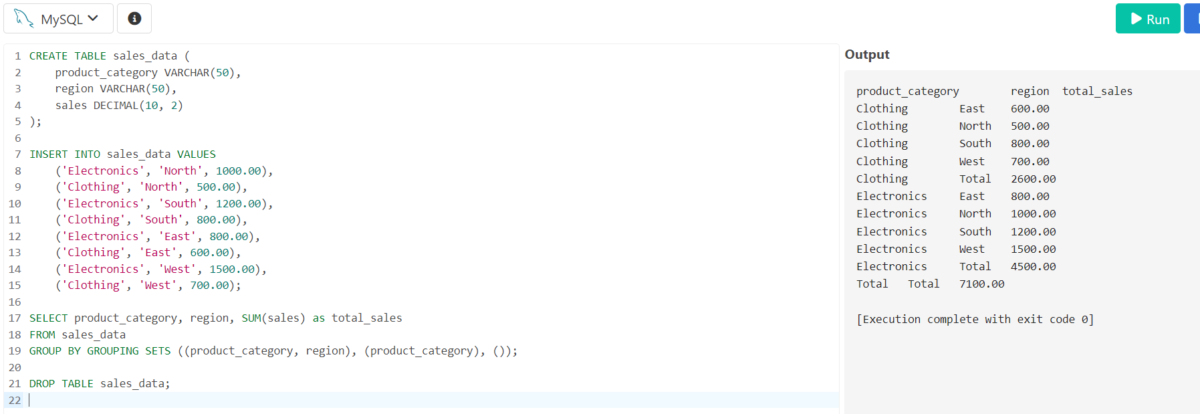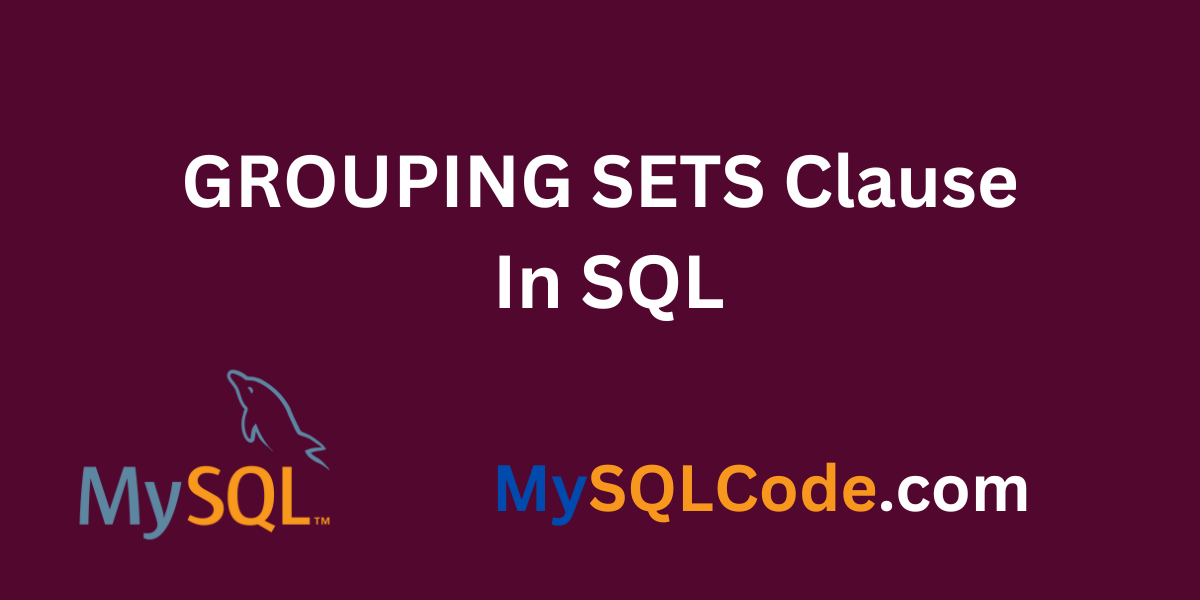In SQL, the GROUPING SETS clause specifies several grouping sets within the same query. This enables aggregation across different columns allowing one to create subtotals or a total of such columns on a single query. It can, therefore, be very useful when you are looking for consolidated data summarized at different levels of detail. In this article, we are going to study this clause in detail. Let’s start with the basics.
Also Read: MySQL GROUP BY vs PARTITION BY
Why We Need GROUPING SETS Clause in SQL?
- To Increase Efficiency: Using GROUPING SETS may sometimes prove more effective compared to running several queries with different GROUP BY clauses. With one sweep or scan through your dataset you get sub-total and total. You may not need to go through the data several times like many other software.
- More Convenient: With short and simple syntax, you write complex agglomeration in GROUPING SETS. You could write one SQL query with several grouping sets at once instead of writing different queries for all levels of aggregation which makes the code shorter and more readable.
- More Flexible: It provides many possibilities concerning groupings. Using this function, you can specify groupings per set of columns on one query letting you look at data at different degrees of granularity side-by-side.
- Complete Reporting of Data: Several times, when handling reporting requirements, you have to present data in various degrees of detail, that is either subtotal values for some categories or category totals or total of all aggregated values. With GROUPING SETS, you can retrieve all this information in one query and create general reports more easily.
Example of GROUPING SETS Clause in SQL
Suppose we have a sales dataset in our hands. Presume there is an already existing table with fields of product category, region, period, and sales amount denominated sales_data. Let’s use the GROUPING SETS clause to retrieve the total sales at various levels of aggregation.
SELECT product_category, region, SUM(sales) as total_sales
FROM sales_data
GROUP BY GROUPING SETS ((product_category, region), (product_category), ());
DROP TABLE sales_data;Code language: SQL (Structured Query Language) (sql)Using the clause GROUPING SETS helps in obtaining the grand totals at different layers like sales, by product types, etc.

Some databases do not support the GROUPING SETS clause. So, there is an alternative, a GROUP BY With ROLLUP. This also performs similar to the GROUPING SETS and gives similar results. The results are always the same, but there are some differences between the two different techniques. Let’s see the difference first.
Difference Between GROUPING SETS and ROLLUP
Let us now see the difference between the GROUPING SET clause and ROLLUP.
GROUPING SETS
- Facilitates the provision of more flexible definitions for multiple grouping sets. The GROUPING SETS clause lists the sets that you clearly specify.
- In parenthesis, you state the grouping sets explicitly.
- It is mentioned expressly that a null set (0) denotes the grand total.
- Also, such simple SQL queries may be more readable in case of complicated queries that require several grouping sets.
ROLLUP With GROUP BY
- Unlike, less flexible because the ROLLUP clause automatically generates the grouping sets based on the specified column.
- Grouping sets do not need to be stated. The database creates them from listing columns described above under the ROLLUP clause.
- This gives the results automatically in the form of the total for different columns as per the ROLLUP clause.
- Reduced authority in delimiting particular block aggregates. Depending on the order of columns mentioned in the ROLLUP clause, the sets are formed automatically.
Real World Applications of GROUPING SETS
Some real-world applications of GROUPING SETS are given below.
- Financial Models: In finance, GROUPING SETS can be used to develop financial reports that comprise subtotals and grand totals for additional dimensions, such as by product, region, and period.
- Analysis of Sales Data: For sales data, GROUPING SETS can help analyze performance at distinct levels, such as by product category, sales region, and salesperson, providing subtotals and grand totals for more reasonable insights.
- Managing Inventory: GROUPING SETS can be used to analyze inventory data, supplying summaries at various levels, such as by product category, warehouse location, and period, to optimize stock levels and distribution.
- HR Analytics: In HR analytics, GROUPING SETS can help analyze employee data by department, location, and job role, permitting reporting at diverse levels for areas like salary expenses and workforce distribution.
Summary
In this article, we have seen the GROUPING SETS clause which is the next version of the GROUP BY clause. The basic example of the GROUPING SETS Clause is explained in detail. We can also get similar results using GROUP BY with the ROLLUP technique. The outcomes are similar, but there are many differences. These differences are also mentioned in detail. The real-world application of the GROUPING SETS Clause is also mentioned in detail. We hope you will enjoy this article.
Reference
https://stackoverflow.com/questions/25274879/when-to-use-grouping-sets-cube-and-rollup
